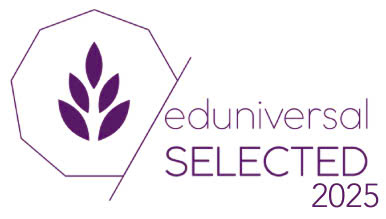- Eduniversal
-
-
Business Schools Ranking
-
Africa
- Algeria
- Angola
- Benin
- Cabo Verde
- Cameroon
- Congo
- Djibouti
- Egypt
- Eswatini
- Ethiopia
- Gabon
- Ghana
- Ivory Coast
- Kenya
- Lesotho
- Madagascar
- Malawi
- Mali
- Mauritania
- Mauritius
- Morocco
- Mozambique
- Namibia
- Nigeria
- RDC
- Rwanda
- Senegal
- Sierra Leone
- Somalia
- South Africa
- Sudan
- Tanzania
- Togo
- Tunisia
- Uganda
- Zambia
- Zimbabwe
- Central & Eastern Europe
- Central Asia
- Eurasia & Middle East
- Far East Asia
- Latin America
- North America
- Oceania
- Western Europe
-
Africa
- Schools of Excellence by field
- Awards
- News
- Contact
Summary:
Colombia is entering a transformative phase for business education. This article explores the economic and educational landscape driving business school evolution, highlights emerging trends for 2025, addresses institutional challenges, and identifies key opportunities for growth and impact.
Colombia’s Economic and Educational Backdrop in 2025
Colombia’s economic stability and its educational reforms have created a fertile environment for the transformation of higher education, particularly business schools. In Q2 2025, the country reported a 2.1% GDP growth, with momentum particularly strong in the financial services, agriculture, and retail sectors.
This economic performance amplifies the need for qualified business professionals equipped to sustain growth and lead within evolving industries.
The government's commitment to becoming Latin America’s most educated country by 2025 has steered national policies toward quality and equitable access in education. These factors significantly shape the operational framework of Colombian business institutions, similar to transformative shifts seen in Peru's business schools where regional progress is a national priority.
Key Trends Shaping Business Education in Colombia
1. Internationalization and Global Integration
Colombian business schools are rapidly forging global alliances, expanding exchange programs, and aligning academic offerings with international benchmarks. The focus on global fluency is preparing students and faculty for cross-border careers. Initiatives like bilingual programs and joint degrees are now widespread, reflecting a vision also evident in countries like Mexico.
2. Growing Specializations Based on Market Needs
Specialization in contemporary fields such as data analytics, sustainability management, supply chain innovation, and entrepreneurship is increasingly incorporated. This evolution mirrors student demand and market alignment, also seen in emerging economies such as Chile, where tech-driven innovation shapes curriculum choices.
3. Digital Transformation in Delivery and Curriculum
The digitization of education is not just pedagogical but strategic. Business schools are investing heavily in hybrid and online learning platforms, using AI, Big Data, and digital marketing as key curriculum pillars. This approach enhances both accessibility and technological fluency, a model resonating with practices in Australia's top institutions.
4. Embedding Sustainability and Social Responsibility
With rising awareness around ethics, Colombian business schools now incorporate Environmental, Social, and Governance (ESG) standards throughout their programs. By aligning these priorities with Colombia’s national peace-building and equity goals, institutions enhance their societal impact. This mirrors the strategic education efforts in countries like Brazil, where social responsibility is core to business education.
5. Strengthening Corporate Partnerships and Experiential Learning
Collaborations between universities and industries are deepening, with real-business problem-solving integrated into the curriculum. Internships, live case studies, and corporate mentoring programs are creating value for both students and companies. Similar strategies are successfully cultivated in education ecosystems like Canada, where work-integrated learning is mainstream.
6. Changing Expectations from Students
New generations seek personalized learning, stronger career services, and opportunities that foster innovation. There is also growing enthusiasm for international credentials. Student demands are driving upgrades in learning environments, technology integration, and career placement services.
Significant Challenges Faced by Colombian Business Schools
1. Tight Budget and Funding Constraints
Education financing remains inconsistent. Budget cuts to student loan programs and ideological debates relating to private vs. public investment present access barriers, especially for underserved communities. These financial constraints also limit innovation and infrastructure development.
2. Concerns Around Quality and Competitiveness
The expansion of higher education since the 2010s has made maintaining quality among all institutions difficult. Disparities in graduation rates and academic rigor weaken the real-world preparedness of some graduates, raising questions on employability and value delivery.
3. Talent Migration and Brain Drain
Attracting and retaining high-quality faculty and top-performing students is a continuous challenge. Global academic migration and urban concentration of resources contribute to regional disparities, similar to those faced in countries like Argentina.
4. Rapid Technological Change Requires Agility
Adapting curricula to technological advancements like AI and data science requires ongoing training and resource investment. However, the speed at which tech evolves often outpaces institutional readiness, revealing gaps in program innovation and relevance.
5. Addressing Geographic and Socio-economic Inequities
Despite national goals for inclusive education, regional inequality persists. Business education access remains concentrated in urban centers, risking the exclusion of rural and marginalized populations.
Opportunities for Innovation and Advancement
1. Expansion Through Hybrid and Online Learning
Online education allows institutions to extend their reach to working professionals, rural students, and international audiences. This diversification strengthens not only their enrollment rates but also financial sustainability, a model explored similarly in India.
2. Building Dynamic Industry-Academia Synergies
Deeper engagement with the private sector offers benefits such as aligned curricula, upskilled graduates, and vast internship pipelines. These partnerships also foster corporate innovation, turning institutions into incubators for industry transformation.
3. Expanding Global Academic Networks
Through dual-degree programs, international faculty exchange, and joint research, Colombian schools can boost their global standing. Partnerships with institutions in areas like Spain and France can offer cross-border advantages for both students and faculties.
4. Embedding Ethical and Sustainable Leadership
By training students in responsible leadership that aligns with global ESG standards, Colombian schools can differentiate themselves. Building these competencies ensures graduates lead with environmental awareness and ethical frameworks crucial for future business landscapes.
5. Fostering a Culture of Innovation and Entrepreneurship
Colombian institutions are uniquely positioned to nurture startups and scalable ventures across diverse sectors. Business schools can drive entrepreneurship by offering incubators, seed funding networks, and innovation hubs that foster real-world startup ecosystems. Similar initiatives are actively shaping educational landscapes in neighboring Venezuela.
The Path Forward for Colombia’s Business Schools
As Colombia positions itself as a regional educational leader, business schools serve as a strategic growth engine. By embracing internationalization, digital innovation, industry collaboration, and ESG leadership, they can overcome resource limitations and uneven accessibility.
Collaborative efforts across academia, government, and the private sector are essential for achieving national education and economic ambitions.
Rising to meet evolving demands will enable Colombia to stand alongside global peers already championing business education excellence, as seen in countries like Colombia and Ecuador.
The road to 2025 is paved with both complexity and opportunity—but with bold strategies and inclusive education, Colombian business schools are well-positioned to not just keep pace, but lead.
Business Schools Ranking in Colombia
|
4 Palmes of Excellence Top Business Schools with significant international influence |
Rank Position in
Palmes’ League |
Deans’ Recommendation
rate 2025 |
|---|---|---|
| 1 | 285 ‰ FEATURED |
|
3 Palmes of Excellence Excellent Business Schools with reinforcing international influence |
Rank Position in
Palmes’ League |
Deans’ Recommendation
rate 2025 |
|---|---|---|
|
Pontificia Universidad Javeriana Facultad De Ciencias Económicas Y Administrativas |
1 | 203 ‰ |
|
2 Palmes of Excellence Good Business Schools with strong regional influence |
Rank Position in
Palmes’ League |
Deans’ Recommendation
rate 2025 |
|---|---|---|
| 1 | 85 ‰ | |
| 1 | 85 ‰ | |
|
Universidad Nacional de Colombia - Facultad de Ciencias Económicas |
3 | 69 ‰ |
|
Universidad de la Sabana School of Economic and Administrative Sciences (1) |
4 | 67 ‰ |
| 5 | 54 ‰ | |
| 6 | 49 ‰ |
(1) Upgrade league has been approved in 2025 by the Eduniversal International Scientific Committee |
The Eduniversal Selected Schools list aims to highlight institutions by country are not yet eligible for a Palmes of Excellence League entry but are on a positive path toward achieving it.
The schools on the Eduniversal Selected list have been recognized by Eduniversal for their innovative projects, disruptive energy, and growing potential.
The schools on the Eduniversal Selected list have been recognized by Eduniversal for their innovative projects, disruptive energy, and growing potential.
Universidad Antonio Nariño - Facultad de Ciencias Económicas y Administrativas
Universidad de Cartagena
Universidad de Santander
Universidad del Norte Barranquilla
Universidad del Rosario
Universidad del Valle Cali
Universidad Pontificia Bolivariana
For a complete overview of master’s programs in Colombia, visit our website.
You’ll find updated rankings, detailed program profiles, and exclusive advice to help you choose the right path for your career.
You’ll find updated rankings, detailed program profiles, and exclusive advice to help you choose the right path for your career.







